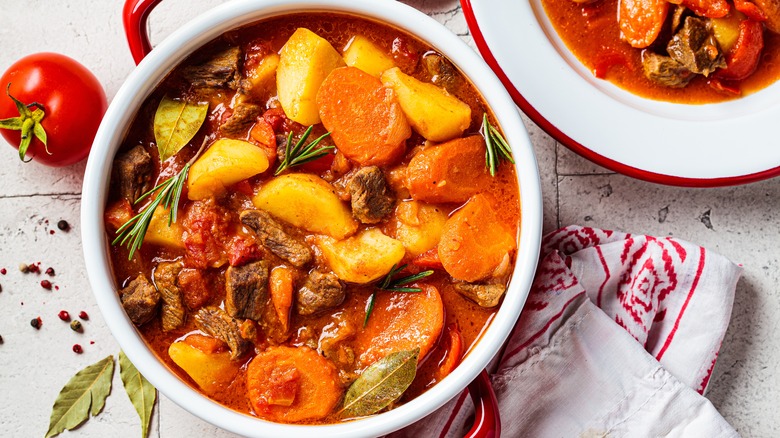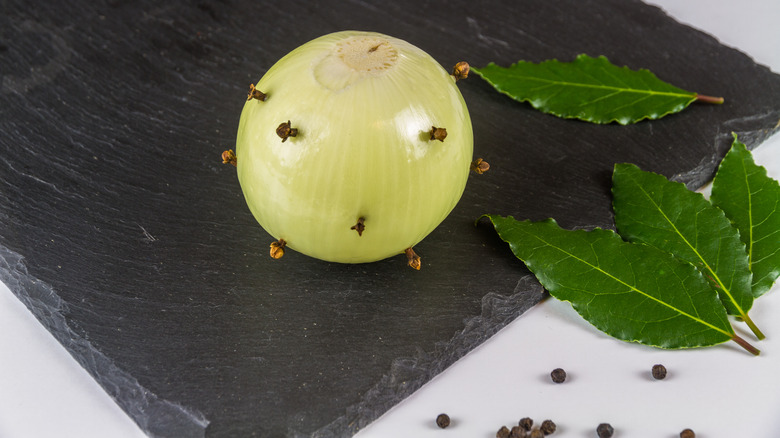The Simple Way To Cook With Clove Is In Your Next Stew
As any foodie who has ever worked with the ingredient before knows, dried cloves are shaped like tiny spikes and emit a strong, fragrance. Here's a tip for using them that's fun as it is flavorful: To take your meaty stews to the next level, stab those pointy cloves into the surface of an entire onion (so satisfying).
Cloves' pointy shape reflects their origin. They come from the flower buds of the evergreen tree. Before reaching maturity, they are harvested and dried. They are a crucial element of spiced cider, chai, garam masala, allspice, and pumpkin spice. On their own, cloves are an intense, warming ingredient that can pack a powerful punch in your savory stews. The slightly sweet, pungent spice makes the perfect fit to complement meats like beef and venison and hold up against their bold flavors.
To do it, simply peel a white or vidalia onion, then stud the entire surface of the onion with the hard, sharp cloves, forming a rather pretty orb that somewhat resembles a Christmas ornament. From there, pop the clove-studded onion into your stew and allow it to simmer. As it cooks and the onion softens, your stew will be loaded with knockout clove spice and savory depth. You can add as many or as few cloves as you like depending on your desired strength of spiced flavor and the duration of time you plan to leave it simmering.
Spike an onion with dried cloves and pop it in the stew pot
This technique also makes for easy removal, saving home cooks from having to fish out individual cloves from the stew later on. Alternatively, if your stew is made with a larger cut of meat, like pot roast or a whole ham (or any instance where the meat needs to be par-cooked separately before being added to the stew pot), you can also stud the meat itself with cloves to infuse it with flavor as it cooks.
Since cloves are intense, a little goes a long way. So take care not to over-steep. To avoid over-infusion, remove the studded onion once the stew has reached the desired taste. If you want to display the studded onion as an attractive garnish, plate it separately beside the stew on the dinner table rather than leave it in the pot.
Cloves would make a natural fit for this cozy cinnamon apple cider beef stew with garlic, rosemary, thyme, and cranberries. Or, use them to add spiced depth to classics like old-fashioned beef stew or Welsh cawl. Dimensional cloves could elevate game meats like rabbit. In Trinidadian slow-braised oxtail stew, the cloves' pungency could help cut through the oxtail's rich collagen. In meaty dishes, cloves tend to pair especially well with garlic and cinnamon. Not a meat eater? Try popping a clove-studded onion in this umami-forward hearty mushroom stew.

